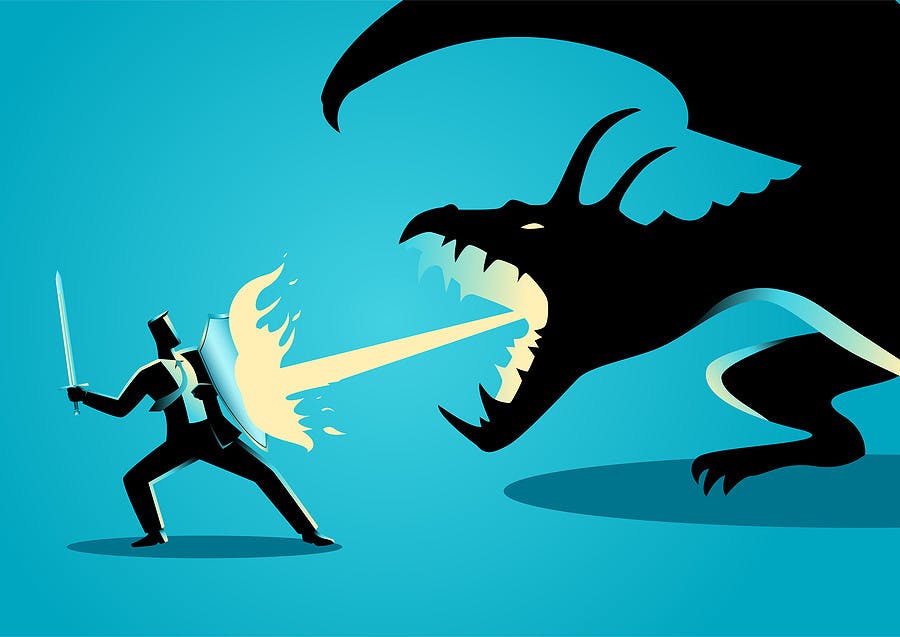“I must not fear. Fear is the mind-killer. Fear is the little-death that brings total obliteration. I will face my fear. I will permit it to pass over me and through me. And when it has gone past, I will turn the inner eye to see its path. Where the fear has gone, there will be nothing. Only I will remain.” — American writer Frank Herbert
According to a recent poll by the Kaiser Family Foundation, over half of U.S. adults (56%) report that “worry or stress related to the coronavirus outbreak has caused them to experience at least one negative effect on their mental health and wellbeing.” Our organizational leaders are no exception.
So what role does fear play in leadership during this time of change, challenge, and significant stress?
It is in the most stressful moments that leaders are most important. In a crisis, we look to leaders for answers, for a calm mind, and a strong perspective. We want to hear that they’re part of something larger than themselves, that leaders have got their back, that we’re all for one and one for all, and that we will help each other get through the crisis and potentially become stronger for it. Leaders are the ones we trust to manage and handle their fear and our own by being honest, clear, and by providing a vision for a positive future.
When Fear Takes Hold
Fear is an adaptive response designed to protect us from danger. It’s our emotional warning system that something is a threat. It puts us into survival mode, pumping adrenaline and shifting our brain capacity from our executive functioning into our midbrain where we make split-second decisions of how to respond to threat. When the amygdala determines there’s an immediate threat, our physiology goes into a fight or flight response. Daniel Goleman, author of Emotional Intelligence, refers to this as the “amygdala hijack.”
When we experience a fight, flight, or freeze response, our adrenaline, cortisol, and blood pressure rise to help us meet a situation that our body perceives as putting us in critical danger. This response is a hardwired evolutionary adaptation that can serve us well when we are under immediate physical threat. It’s the part of us that slams on the breaks when we see a car suddenly stop in front of us, or that runs when an animal attacks.
It’s also something that can sabotage our best thinking, decision-making, and capacity to innovate during challenging times.
Think of a time when you experienced your own fear or anxiety. Was your natural response to freeze, to fight, or to run? You might remember feeling short of breath, your heart racing, becoming tense and ready to react quickly. We all have reactive patterns that protect us from immediate physical danger — but they ultimately don’t make for trustworthy and strong leadership and management.
A leader operating from the freeze response may have “analysis paralysis” and not want to make critical decisions. To fight as a leader may look like defensiveness, losing control emotionally, and snapping at others who are on the same team.
On the other hand, to flee (the “flight” response) might mean literally leaving the organization or their role, or distancing from responsibility instead of recognizing the importance of stepping up. These fear-based behaviors are damaging to trust, loyalty, and engagement of others in the collective pursuit of success.
Transcending Fear
Leadership requires us to command and transcend our own personal fear in order to step up to the challenge of demonstrating stewardship and strength.
Leaders must also have empathy for colleagues and customers who may be experiencing an even deeper level of fear and stress. Research shows that senior executives have an overall higher level of resilience and change-readiness than the people they lead. This may bias those in leadership to jump ahead to solutions and to present positive visions of the future before their people are ready to hear that message.
However, quelling the fear in others is a critical step for moving through a crisis, and doing so requires leaders to demonstrate empathy and to “start where people are”, beginning with a message that acknowledges what’s real in the present moment. Focusing on a positive future vision is the second step. It’s a simple two-step structure that can go a long way to build trust and to shift fear into hope, efficacy, resilience, and optimism.
So how do we shift to more strategic and empathetic leadership? Dr. Herbert Benson pioneered the idea that the fight or flight response can be disengaged by what he called the “Relaxation Response.” There are numerous ways to activate that response, the easiest being to just sit quietly and let your mind and body focus on the simple act of breathing in and out. You can then better focus on exploring leadership questions like: What impact am I having, and is it the impact I want to have?
